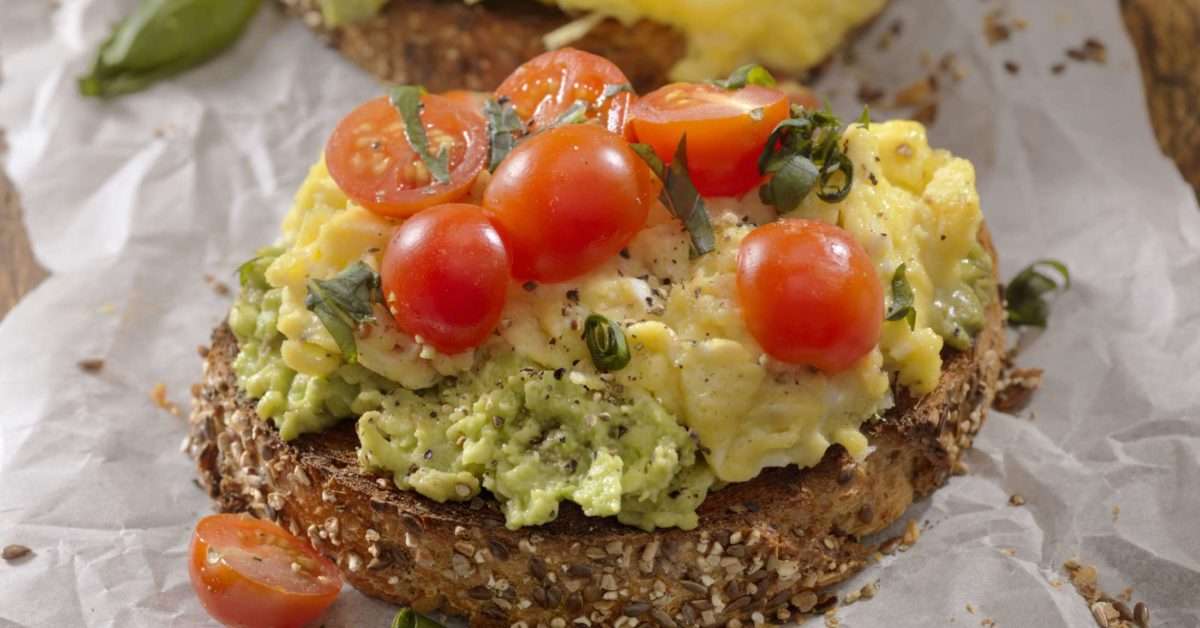For years, doctors have speculated that certain foods may have something to do with attention deficit hyperactivity disorder, or ADHD. Much research has been done on the subject of a helpful diet for ADHD, but according to the Mayo Clinic, experts don’t believe that foods actually cause ADHD. What some foods seem to do, however, is worsen ADHD symptoms or cause behavior that mimics the signs of ADHD in children.
Some evidence suggests that children with ADHD may have low levels of essential fatty acids. However, early studies have not consistently concluded that supplementation of omega-3 fatty acids in the diets of children with ADHD will improve behavior. Omega-3 fatty acids affect the transmissions of some neurotransmitters (brain chemicals). While a balance of omega-3 fatty acids and omega-6 fatty acids is best for overall health, the typical American diet contains too few omega-3s. Some research shows that ADHD and omega-3 deficiency share two symptoms:
- Excessive thirst
- Increased need to urinate
More research is needed in this area. The general dietary recommendations for children are to include fruits and vegetables, whole grains, bean, lean meat, and fish. Ask your ADHD dietitian about the best type of fish for ADHD.
Many parents wonder if artificial food additives and colorings contribute to ADHD. Though the causes of ADHD are still unknown, you can try removing the sources of artificial colorings and food additives, including sugar-sweetened drinks, candy, and colorful cereals, and determine if your child’s behavior improves. Eliminate processed food products, and instead provide a wholesome diet of fresh, healthy foods to optimize the health and well-being of your child.
Be aware that megadoses of vitamins and minerals can be toxic to a child and can interact with ADHD pills. To date, there is little consistent evidence that ADHD can be treated with nutritional supplements. Again, aim for a balanced diet that includes a variety of fresh, whole foods.
What about caffeine and ADHD? Excessive caffeine and excessive consumption of fast foods and other foods of poor nutritional value can cause kids to display behavior that might be confused with ADHD, according to Frank Barnhill, MD, an expert on ADHD and the author of Mistaken for ADHD.
To learn more about a diet for ADHD, talk with your child’s doctor about the pros and cons of trying a diet that eliminates food additives to see if it makes a difference in your child’s behavior. Make sure your doctor or an ADHD dietitian helps supervise the diet plan. A diet that eliminates too many foods can be unhealthy because it may lack necessary vitamins and nutrients.
Read on for a list of foods that may be linked with ADHD symptoms.
Can what you eat help attention, focus, or hyperactivity? There’s no clear scientific evidence that ADHD is caused by diet or nutritional problems. But certain foods may play at least some role in affecting symptoms in a small group of people, research suggests.
So are there certain things you shouldn’t eat if you have the condition? Or if your child has it, should you change what they eat?
Here are answers to questions about elimination diets, supplements, and foods that may ease symptoms of the disorder. But remember to check with your doctor to make sure these foods and diets don’t affect your medicine or the way it’s absorbed.
How ADHD Affects Kids
ADHD causes kids to be more inattentive, hyperactive, and impulsive than is normal for their age. ADHD makes it harder for kids to develop the skills that control attention, behavior, emotions, and activity. As a result, they often act in ways that are hard for parents manage.
For example, because they are inattentive, kids with ADHD may:
- seem distracted
- seem not to listen
- have trouble paying attention
- not follow directions well
- need many reminders to do things
- show poor effort in schoolwork
- have trouble getting organized
Because they are hyperactive, kids with ADHD may:
- climb, jump, or roughhouse when it’s time to play quietly
- fidget and seem unable to sit still
- rush instead of take their time
- make careless mistakes
- be on the go (constantly in motion)
Because they are impulsive, kids with ADHD may:
- interrupt a lot
- blurt out
- do things without thinking
- do things they shouldn’t, even though they know better
- have trouble waiting, taking turns, or sharing
- have emotional outbursts, lose their temper, or lack self-control
At first, parents might not realize that these behaviors are part of ADHD. It may seem like a child is just misbehaving. ADHD can leave parents feeling stressed, frustrated, or disrespected.
Parents may feel embarrassed about what others think of their child’s behavior. They may wonder if they did something to cause it. But for kids with ADHD, the skills that control attention, behavior, and activity don’t come naturally.
When parents learn about ADHD and which parenting approaches work best, they can help kids improve and do well.
How Parents Can Help?
Parenting is as important as any other part of ADHD treatment. The way parents respond can make ADHD better — or worse.
If your child has been diagnosed with ADHD:
Be involved. Learn all you can about ADHD. Follow the treatment your child’s health care provider recommends. Go to all recommended therapy visits. If your child takes ADHD medicines, give them at the recommended time. Don’t change the dose without checking with your doctor. Keep your child’s medicines in a safe place where others can’t get to them.
Know how ADHD affects your child. Every child is different. Identify the problems your child has because of ADHD. Some kids need to get better at paying attention and listening. Others need to get better at slowing down. Ask your child’s therapist for tips and ways you can help your child practice and improve.
Focus on teaching your child one thing at a time. Don’t try to work on everything at once. Start small. Pick one thing to focus on. Praise your child’s effort.
Work with your child’s school. Talk with your child’s teacher to find out if your child should have an IEP or 504 plan. Meet often with teachers to find out how your child is doing. Work with the teacher to help your child do well.
Connect with others for support and awareness. Join a support organization for ADHD like CHADD to get updates on treatment and info, etc.
Find out if you have ADHD. ADHD often runs in families. Parents (or other relatives) of kids with ADHD might not know they have it too. When parents with ADHD get diagnosed and treated, it helps them be at their best as parents.
While there is no definitive ADHD diet, many sources claim that certain diets, foods, and meal plans can help reduce symptoms.
Various foods can affect energy and concentration levels. Certain choices may, therefore, be better for people with attention deficit hyperactivity disorder (ADHD).
Some research suggests that following specific diets — such as elimination diets, the Few Foods diet, and the Mediterranean diet — could play a role in managing ADHD.
In this article, we first take a look at specific foods that could improve or worsen ADHD symptoms. Then, we explore what the research says about specific ADHD diets.
Best foods for ADHD
Certain foods are better at keeping a person’s energy and blood sugar levels stable and improving concentration. These foods may especially benefit people with ADHD.
The following may be particularly helpful:
Protein-rich foods

Share on Pinterest
Eggs and whole-grain bread may benefit people with ADHD.
Protein is essential for the health of the brain, and it plays a key role in producing brain chemicals called neurotransmitters.
Including protein in a meal also prevents spikes in blood glucose levels. Some people suggest that these surges increase hyperactivity.
Foods rich in protein include:
- meat and poultry products
- fish and shellfish
- beans and lentils
- eggs
- nuts
Complex carbohydrates
Like protein, complex carbohydrates can help prevent blood sugar spikes.
Eating this type of carbohydrate also keeps a person feeling fuller for longer, which may stop them from snacking on sugar-filled foods.
In addition, when people eat them before bedtime, these foods may encourage better sleep.
The foods below contain complex carbohydrates:
- fruits
- vegetables
- whole-grain bread and pasta
- brown rice
- beans and lentils
Vitamins and minerals
Some studies link ADHD with low levels of certain micronutrients, including iron, magnesium, zinc, vitamin B-6, and vitamin D.
However, it is unclear whether these lower levels lead to the development of ADHD and whether consuming more of these nutrients can improve symptoms.
Nonetheless, they are all essential nutrients in the diet, so eating more foods that contain them is unlikely to cause harm.
People can find these nutrients in the following foods:
- iron: beef, liver, kidney beans, and tofu
- zinc: meat, shellfish, beans, and nuts
- magnesium: pumpkin seeds, almonds, spinach, and peanuts
- vitamin B-6: eggs, fish, peanuts, and potatoes
- vitamin D: fatty fish, beef liver, egg yolks, and fortified foods
Omega-3 fatty acids

Share on Pinterest
Chia seeds are a good source of omega-3 fatty acids.
Omega-3 fatty acids are essential fats that a person must get from their diet. They play a role in heart and brain health.
Children with ADHD may have reduced levels of omega-3 fats. Some research suggests that consuming more omega-3s may help modestly improve symptoms.
According to an interview conducted by a group of nonprofit organizations called Understood.org, omega-3s may improve attention, focus, motivation, and working memory in children with ADHD.
However, they caution that more research is necessary and that omega-3 fatty acids are not a substitute for ADHD medications.
Some sources of omega-3 fatty acids include:
- fatty fish, such as salmon and tuna
- walnuts
- chia seeds
- flax seeds
Foods to limit or avoid
Adults and children with ADHD may feel better if they limit or avoid the following:
Sugar
Eating sugary foods can cause blood glucose spikes and crashes, which can affect energy levels. Some caregivers report a link between sugar consumption and hyperactivity in children with ADHD.
While some studies indicate a link between high consumption of sugar and soft drinks with a higher prevalence of ADHD diagnosis, other research finds no connection.
Even if it does not improve ADHD symptoms, limiting sugar intake is a healthful choice for everyone, as it may reduce the risk of diabetes, obesity, and tooth decay.
Other simple carbohydrates
Sugar is a simple — or refined —carbohydrate.
Other simple carbohydrates can also contribute to rapid changes in blood sugar levels and people should only consume them in moderation.
The foods below contain simple carbohydrates:
- candy
- white bread
- white rice
- white pasta
- potatoes without skins
- chips
- sodas
- sports drinks
- potato fries
Caffeine
Small amounts of caffeine may benefit some people with ADHD — some research suggests that it can increase concentration levels.
However, caffeine can intensify the effects of certain ADHD medications, including any adverse reactions that a person may experience.
Adults with ADHD should limit their caffeine intake, especially if they are taking ADHD medications. Children and teenagers should avoid tea, coffee, and cola completely.
Artificial additives
Some children with ADHD can benefit from removing artificial additives from their diets.
The American Academy of Pediatrics (AAP) recommend that children avoid these additives, particularly food colorings because they can worsen ADHD symptoms.
Artificial additives may also interfere with hormones, growth, and development.
Many prepackaged and processed products contain artificial coloring, flavors, and preservatives, including some:
- breakfast cereals
- candies
- cookies
- soft drinks
- fruit punches
- vitamins for children
Allergens
Some researchers claim that removing potential allergens — such as gluten, wheat, and soy — can improve focus and reduce hyperactivity.
However, eliminating these allergens likely only benefits those who actually have an allergy or intolerance. Consider discussing food allergies with a doctor or dietician before removing these foods from the diet.
Diets for ADHD
While there is no cure for ADHD, many people discuss certain diets or foods that they believe can help manage ADHD symptoms, such as hyperactivity and difficulty concentrating.
The following sections look at the research behind various diets that people believe may reduce symptoms of ADHD.
An elimination diet: Removing artificial additives
The AAP recommend that children avoid artificial additives, warning that they could worsen ADHD symptoms.
Following a diet that eliminates additives would involve not eating:
- artificial colors
- artificial flavors
- preservatives
- artificial sweeteners
Many breakfast cereals, candies, and sodas contain these chemicals.
Over the years, various researchers have looked into the effects of additives on ADHD.
According to a 2017 review, eliminating additives may have a small effect on ADHD symptoms. The authors suggest that the specific benefits may also extend to children without the condition.
The Few Foods diet
The Few Foods diet is a short-term intervention that helps people determine whether certain foods make their ADHD symptoms worse.
It is highly restrictive and involves eating only a small number of foods that are unlikely to cause an adverse reaction.
If a person notices a reduction in their symptoms after eliminating certain foods, this suggests that a food allergy or intolerance could be making their ADHD symptoms worse.
After beginning with the Few Foods diet, people gradually reintroduce other foods and watch for a reaction.
A different 2017 review confirms that the Few Foods diet could help children identify and eliminate problematic foods.
The Few Foods diet is extremely restrictive at the start. For example, one diet plan involves eating only lamb, chicken, potatoes, rice, bananas, apples, and cruciferous vegetables.
The Mediterranean diet
Share on Pinterest
The Mediterranean diet is a safe diet for people with ADHD.
The Mediterranean diet is well known for benefiting the health of the heart and brain. It involves eating mainly:
- fruits
- vegetables
- whole grains
- legumes
- nuts
- healthful fats, such as olive oil
Some research suggests that not following a Mediterranean diet is associated with ADHD diagnosis. However, the results do not suggest that a Mediterranean diet could prevent or treat ADHD symptoms.
Nonetheless, because of the benefits to other areas of health, it is a safe diet for people with ADHD.
Other diet tips
The following diet tips may also benefit people with ADHD:
- Eat balanced meals. Try to include a mix of vegetables, whole grains, protein, and omega-3 fatty acids in most meals.
- Schedule regular meal and snack times, as routine is important for children with ADHD.
- Do not skip meals, as this could lead to blood sugar crashes and excessive junk food consumption.
- Keep plenty of healthful foods on hand for a quick snack, such as fruits, nuts, and chopped vegetables.
- Speak to a doctor about taking a multivitamin and multimineral supplement, which may be especially helpful for picky eaters and people with nutrient deficiencies.
- Check all ingredient labels on food packaging, and avoid foods that contain artificial additives and high amounts of sugar.
- Shop around the perimeter of the grocery store, which tends to contain the most minimally processed whole foods.
Sample meal plan for children
Try the following healthful meal plan for children with ADHD:
breakfast: scrambled eggs with cherry tomatoes on whole-grain toast, and a small smoothie made with milk, spinach, banana, chia seeds, and frozen strawberries
snack: sticks of cucumber and bell peppers with hummus
lunch: a cheese and bean quesadilla with guacamole and salsa, and a slice of melon
snack: trail mix with walnuts, almonds, and dried berries
dinner: homemade salmon fish sticks, baked potato, and green vegetables
dessert (optional): frozen chocolate pudding made with low-fat milk
Sample meal plan for adults
This healthful meal plan may be a good option for adults with ADHD:
breakfast: avocado and eggs on whole-wheat toast, herbal tea or coffee
snack: yogurt with berries and chia seeds
lunch: a salad with baked salmon and quinoa on a bed of mixed leaves, cucumber, and bell peppers, topped with sunflower seeds
snack: sliced apple dipped in peanut butter
dinner: chicken and vegetable curry with brown rice
dessert (optional): 1 ounce of good-quality dark chocolate, and herbal tea
Summary
Some research suggests that certain dietary choices may help with some of the symptoms of ADHD. However, the evidence is limited.
In general, the best diet for people with ADHD is the diet that doctors recommend for most other people — one that is rich in fruits, vegetables, whole grains, healthful fats, and lean proteins. It should include limited amounts of saturated fats and junk foods.
People with food allergies or intolerances should avoid trigger foods. Also, some people require vitamin and mineral supplements, though it is important to speak with a doctor before taking them.
Read the article in Spanish.



